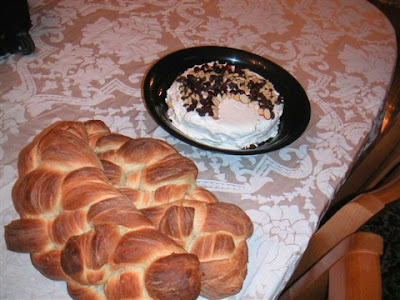Make your own cookie cutter from clip-art and a foil pan

I wanted to make camel-shaped cookies this week, but couldn't find a camel-shaped cookie cutter in time. So I made my own.
If you're making a small batch of cookies, it is faster and easier to make a tape-covered/laminated template, and trace it with a knife. For larger batches, however, this method is very satisfying and worth the effort.

On Monday, while waiting to use the school's photocopy machine, I noticed one of my daughter's teachers making copies of a simple camel graphic. It was meant to be! She gave me a couple of copies of it so I could make a camel cookie cutter.

To measure the length of the outline's perimeter, I took a few pipe cleaners/chenille stems and outlined the shape.

After completing the shape in pipe cleaners, I straightened them to get the measurements.
My camel needed 31" of cutter material.

I used the bottom of a pair of half-size steam table pans for the template, and the sides as the cutter edge. . 
It's best to have at least one spare pan, to avoid the stress of limited materials. I get these pans in bulk from either the restaurant supply store or Costco. They cost about 30 cents each. I used two pans, a few staples, a pair of printouts and glue from the glue gun.
This method resulted in a custom, detailed 5.5" x 4.5" cookie cutter for under $1. It's not a copper heirloom, but it held up well and I've saved it for future reuse.

To make the template, trim the printout, leaving a border of about 1" around the shape. Fold the bottom of the foil pan in half, and staple it to the rough-cut shape in multiple places, well inside the border of the desired shape.

Trim away the rounded corners of the sides and discard them. The flat parts become the cutting edges of the cookie cutter. Cut enough to have about 10% more than the perimeter needs. (I needed 31", so I cut about 3 feet of edges.)

For each edge section, fold the top half twice to make a handle. Be careful, the foil can be sharp.


Using the roughly outlined stapled printout, cut through the two layers of foil and the printout together, (three layers total). Make this as accurate as possible.

When done with this step, you'll have a template that is paper on the top, and two layers of foil on the bottom. I'm going to call this the First Foil Sandwich. This is the view of the bottom:

This is the top:
Make the Second Foil Sandwich. Fold the second foil pan's bottom and staple the First Foil Sandwich to the folded foil bottom. Staple inside the shape's outline through all the layers, keeping the staples well inside the shape.

Cover the paper part of the Second Foil Sandwich with packing tape to protect it from the cookie dough, and to allow it to be washed.

Cut through the bottom/new two layers of foil to create the completed template. It will be five layers thick: One "laminated" paper layer, and four foil layers.
Use a glue gun and a stapler to secure all the edges together. It should be firm and solid.

Holding the prepared sides carefully by their folded edges, bend them around the template. The foil will be shaped a bit differently on the top folded edge than the bottom sharp edge. Concentrate on getting the bottom edge to follow the template accurately at the expense of the folded edge's shape. The part that cuts is what really matters.

When it's time to join two sections of foil, line up the cutting edges and overlap the side pieces with a glue gun. I like to have at least an inch of overlap.
If the tops don't align, don't worry. It is critical that the bottom cutting edges are aligned, but the tops can be folded to meet.

When the last piece is bent, leave it unattached. Do not complete the loop.
Once the shape is complete, insert the template in the bent cutter. Using a glue gun, attach the inside edge of the cutter to the outside edge of the template, about 1" or less from the cutting edge.
The template will help keep the shape accurate, and give it strength to last through multiple uses without distorting its shape.
When the entire perimeter of the template is glued to the inside of the cutter shape, you will be left with the overlap of the incomplete circuit/loop of cutter edge. These can now be secured together with the glue gun.

Make your favorite recipe for rolled cookies. We made sugar cookies and gingerbread cookies.

Most rolled doughs require some chilling. If you have a large shape, a pair of long, flat spatulas are helpful.

Most cookies do well with parchment paper. I use my metal kitchen chairs as cooling racks.

I didn't get to the gingerbread cookies in time to frost them, because the kids came home and "tested" half of them, then put the rest away for their lunchboxes.
Gingerbread tends to spread, so some of the details of the cookies' shapes are lost. This can be an advantage, if the shape has defects. The sugar cookies have a more controlled rise, retaining all the shape's contours and details.

Here is one of the lunchbox-ready gingerbread cookies. If it were any bigger, it would be a tight fit for a sandwich bag.

This is the cookie cutter, after it made about 90 cookies and was washed well with warm water and soap.
And this is the same cookie cutter, seen from the bottom.
















 Hold a 5"x8" index card in portrait orientation and a 3"x5" Rolodex card in landscape orientation.
Hold a 5"x8" index card in portrait orientation and a 3"x5" Rolodex card in landscape orientation.















